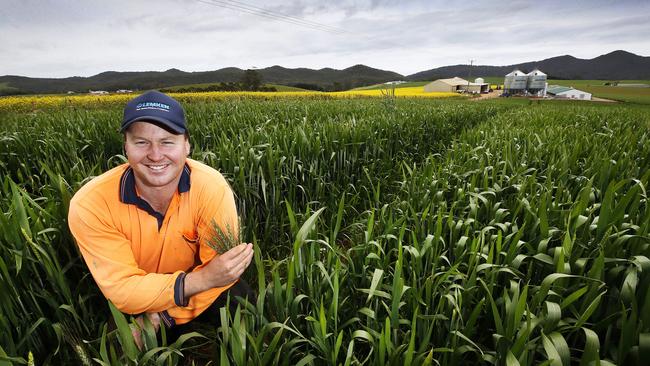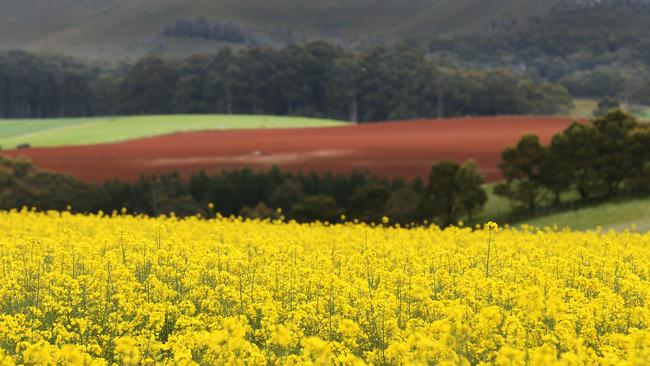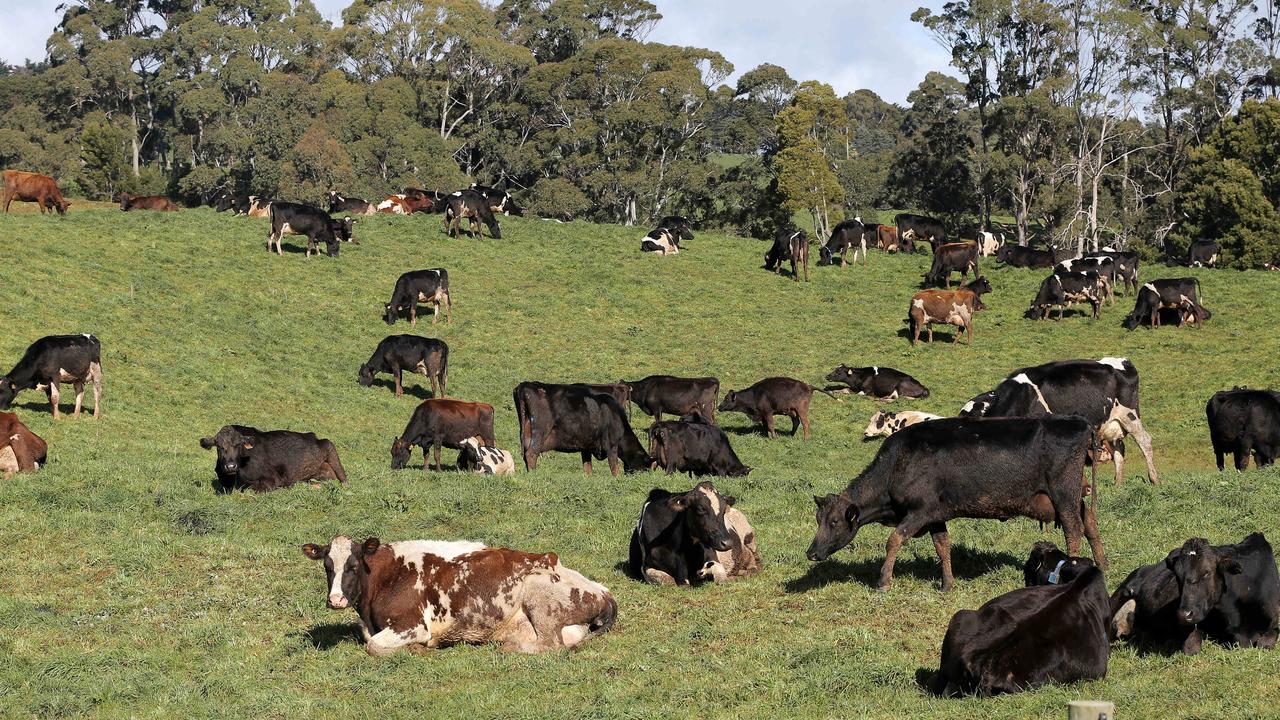Tasmanian crops break Australian harvesting records
IN THE fertile soils of Tasmania’s North-West Michael Nichols has been quietly breaking cropping records.

IN THE fertile soils of Tasmania’s North-West Michael Nichols has been quietly breaking cropping records.
Last season a wheat crop on his farm at Sisters Creek created new Australian record of 13.01 tonnes a hectare.
Three years ago Mr Nichols also produced a canola crop that yielded an impressive 6.17 tonnes a hectare.
As well as the rich volcanic soils across the property, Mr Nichols said both crops could also be attributed to long, cool growing seasons.

“That’s one of the biggest advantages we have here, our growing season is a lot longer,” he said.
“It’s similar conditions this year to when I grew the canola crop. When it’s cooler it allows the plants to set more seed because the flowers aren't affected by the heat. But I think rainfall and the soil type are both factors.”
This year Mr Nichols is growing both canola and wheat and is hoping for similar high yields.
“The year we grew the canola crop we had 2.1 metres of rain here,” he said.
“We’ve had between 800 to 900mm this season, which a lot less, but there’s still plenty of moisture there.”
One of the keys to producing high- yielding crops is seedling density and establishment.
Mr Nichols said it was critical to work out how many seedlings were needed per square metre and adjust sowing rates accordingly. For wheat, Mr Nichols said the ideal rate was 170 to 200 plants per square metre.
As well as cropping, Mr Nichols also runs a contracting business and produces cold-pressed canola oil at an on-farm facility.
The canola oil is supplied to the family’s poultry operation and Hill Farm Produce and is also available for other purchasers.
His grain harvester has on-board yield monitoring and Mr Nichols said this revealed interesting results in his cereal crops.
“When I looked at it I was getting variations of up to 40 per cent across the paddock,” he said.
“Considering that I’ve got one soil type, it made me start to think about what else could be causing it.”

This led him to conduct soil mapping across the cropping areas to determine where there might be nutrition deficiencies. Soil tests were carried out in a grid pattern to record pH levels along with levels of calcium, magnesium, potassium and phosphorus.
Mr Nichols then used variable-rate spreading to help address deficiencies.
He also uses Normalised Difference Vegetation Index mapping technology to track how his crops are performing across the cropping areas.
“There wasn’t really anything specific that was causing the difference, it was normally just where things have been missed in the past,” he said.
As well as saving about $20,000 in fertiliser costs, Mr Nichols has also seen more consistency across his crops with variations in yield reduced from 40 per cent to 25 per cent.
Mr Nichols said while he knew his wheat crop last year was going to yield reasonably well, he had not expected it would break records.
“I knew it would be OK because it had nice big plump grains,” he said.
“I didn't expect it to go that high though.”
The record crop was the Einstein variety, but this year the Foundation of Arable Research Australia is trialling two other varieties on the farm as well.
Mr Nichols grows a variety of dual- purpose canola and says it is well suited to the area.
To control the crop heights and prevent lodging, plant growth regulators are used on the cereal crops.
While the North-West Coast is perfect for growing high yielding crops, the coastal environment makes it very difficult for growers to get their crops down to the moisture level of 12.5 per cent most grain merchants require.
To solve this issue, Mr Nichols is now installing a new storage and aeration facility on the property. This will allow crops to be harvested with up to 16 per cent moisture and dried down to the required level after harvest.
“Some people in this area are a bit reluctant to grow cereals like wheat because it can be so difficult to get the moisture levels to where they need to be,” he said.
“Also for me contracting, sometimes I’ll only get an hour or so in a day where it’s possible to harvest so it makes getting the crops off when we need to really hard. Now I’ll be able to harvest them when they’re ready and then we can aerate them.
“Hopefully it will give growers in this area more confidence to grow wheat.”
A number of new silos have been installed on the property, which allows storage of about 2000 tonnes of grain.
Part of the new business has been to establish the North West Grain Pool, which supplies grain grown in the region to local dairy farmers.
While harvest is still a few months away Mr Nichols is interested to see how this year’s crops perform.
“I don't know if I’ll break any records again this year, but as long as I get a good crop with between 11 to 12 tonnes I’ll be happy,” he said.


